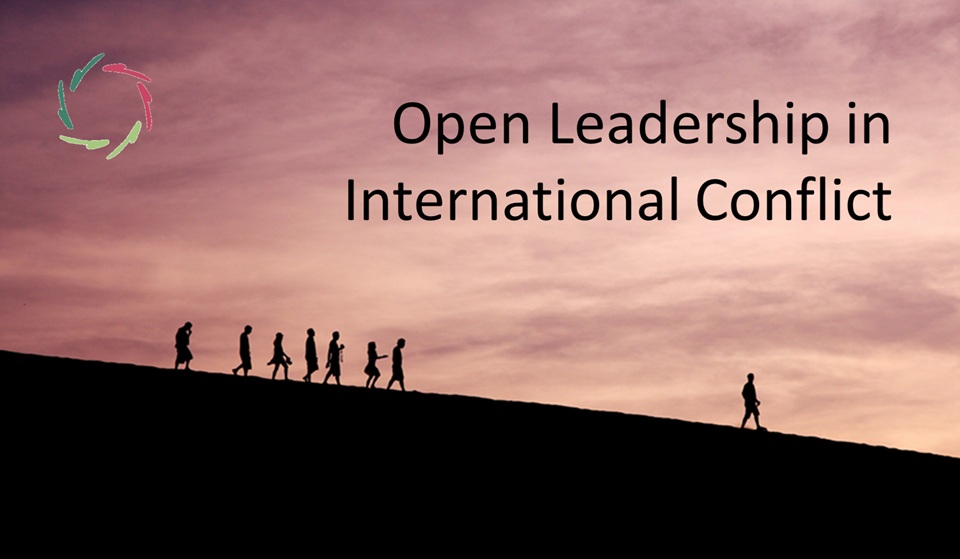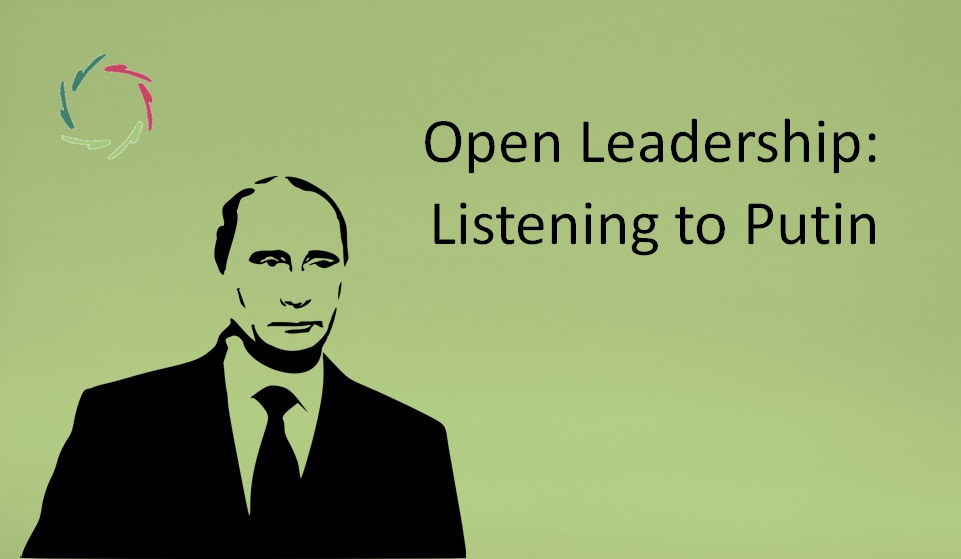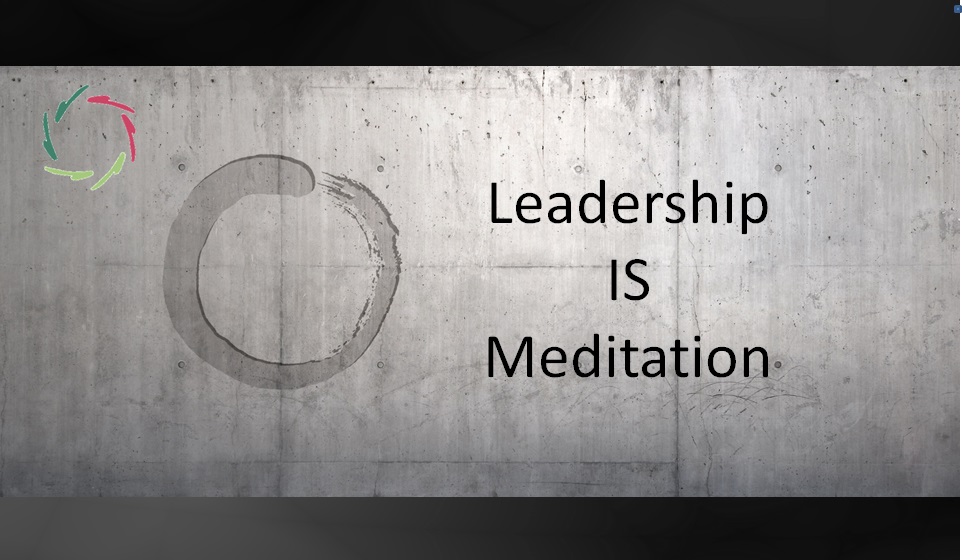Open Leadership in International Conflict

When conflict erupts or threatens to, leadership is tested at its deepest level. Traditional reactions – faster, louder, tougher – too often worsen what they try to solve. In a complex, interconnected world, real strength comes from inner clarity, not outer force.
This blog explores Open Leadership as the next evolution: leadership that can face war without losing humanity, complexity without losing direction, and the future without losing hope.
Leadership when the world is on edge
We are living through an age of sharp tension — visible wars and invisible ones, each feeding on mistrust and fear. The style of leadership that once seemed decisive now risks driving chaos instead of resolving it. When the world burns, the instinct is to tighten control. Yet in complex geopolitical systems, control collapses under its own rigidity ― and the world may collapse with it.
As shown in Complexity Thinking in Geopolitics, Openness is the only mindset capable of working with living complexity. And as Open Vision on Leadership shows, leadership itself is a shared field — not a single will imposed from above but a resonance between leader and people.
In international conflict, this field expands beyond borders. The leader becomes a reflection not only of one nation’s fears and hopes, but of humanity’s larger interdependence.
Transparency under pressure
In wartime or near-war, secrecy and manipulation often seem necessary. Yet they poison the soil from which any peace must grow. Manipulation may win a day, but it destroys trust — and trust is what keeps humanity from falling into the abyss.
Transparency starts within the leader. It means acknowledging fear, bias, and emotion before they distort judgment. From there, transparency can extend outward — carefully, but honestly. When an Open Leader names the shared intention to avoid manipulation, something small yet powerful happens: both sides begin to cooperate in seeking the truth.
Even in conflict, this can be a silent act of peace. The moment two adversaries agree not to deceive each other, they have already changed the nature of the field.
Empathy as battlefield intelligence
Empathy in war sounds naïve, but that’s a misunderstanding. Empathy is not surrender — it’s perception. It’s the capacity to see what truly drives the other side, not just what they declare. In Use Empathy: Try to See the Situation from the Other Party’s Perspective, empathy is described as the diplomat’s deepest tool, capable of uncovering what formal analysis misses.
In violent or pre-violent situations, empathy lets a leader sense the opponent’s fears, humiliations, or symbolic wounds — the unseen motives that logic can’t predict. How Empathy Works explains that empathy operates subconceptually, through subtle resonance. It’s not emotional softness but strategic awareness.
Empathy doesn’t weaken resolve; it refines it. A single act of genuine understanding can shift the energy of a negotiation more than any weapon. Agreements reached through empathy endure because they are grounded in human truth, not strategic illusion.
Reflection over reaction: slowing the fuse
When tension rises, leaders often respond instantly — to appear decisive, to show control, to overwhelm the opponent with speed. In reality, such a reaction often fuels escalation. Complexity punishes impulsiveness. Every quick move reshapes the field in ways no one can foresee.
In Geopolitics Without Depth of Insight, it’s shown that shallow decision-making is not due to lack of intelligence but to lack of introspection. Reflection doesn’t mean indecision. It’s the ability to pause and sense what’s emerging beneath the surface before acting.
An Open Leader dares to pause even when everyone else demands speed. That pause changes the temperature of the conflict. It signals a different kind of power — not reactive, but aware. In the most dangerous moments, the one who holds silence may actually hold the key.
Inclusivity in a fractured field
Conflict narrows perception. It divides the world into us and them, silencing the voices that could prevent catastrophe. An Open Leader resists this narrowing. Inclusivity becomes strategy.
Even in active war, listening to marginal voices – civilians, minorities, dissidents, ‘the enemy’s people’ – restores lost complexity. These voices carry symbolic truths that governments cannot express. Complexity Thinking in Geopolitics reminds us that peace is not built; it emerges. And emergence needs space, which inclusivity provides.
True leadership doesn’t shrink the field; it opens it. When more realities are acknowledged, fewer need to fight for recognition.
Subconceptual pattern recognition: reading the conflict field
The most dangerous signals in war are often invisible. Publicly, leaders speak of defense and strategy; beneath that, deeper currents move — fear, pride, shame, despair. These are not abstractions; they are the true drivers of escalation.
As described in How Empathy Works, the human brain is a vast pattern recognizer. Leaders with Openness and inner stillness can perceive patterns before they surface as events. A tone, a gesture, or a silence may say more than a speech.
This is not mysticism. It’s high-resolution attention — the intelligence of complexity itself. Subconceptual awareness enables a leader to intervene before violence hardens. It’s the art of sensing the direction of energy and quietly turning it.
Compassion as the missing realism
International politics often celebrates ‘realism’ — meaning power, threat, and control. But that realism is incomplete. It leaves out the emotional reality that actually drives human behavior.
As shown in Complex is not Complicated, complex systems cannot be managed from the outside; they can only be influenced from within. Compassion does exactly that. It transforms the inner emotional landscape of conflict without coercion.
Compassion is not moral decoration — it’s strategic clarity. It sees through anger to the pain underneath and acts from that recognition. A leader without Compassion may win battles, but not peace. The next realism must be Compassion-based realism, or realism itself will become obsolete.
Compassion that crosses enemy lines
A new kind of leadership is possible when a head of state speaks directly – sincerely – to the people of another nation, even in conflict. Beyond propaganda and manipulation, this form of communication strikes at the symbolic heart of the situation.
If leader A speaks with genuine Compassion to population B, acknowledging their suffering and explaining intentions transparently, something new can occur. The message bypasses the official narrative, reaching the subconscious level of shared humanity. It must be completely honest; manipulation would destroy it.
People recognize authenticity. They feel it subconceptually. Such Openness might not end a war overnight, but it can soften the field in which new realities become possible. It is the diplomacy of humanity itself.
Silence as a form of leadership in conflict
Amid gunfire, rhetoric, and panic, silence can feel like the only space left for truth. In the hands of an Open Leader, silence is not emptiness — it is presence.
Moments of silence allow symbolic realignment. They give breathing room to the mind of the adversary. Silence breaks the chain of reactions, allowing complexity to settle.
As in AURELIS meditation, the value lies not in words but in presence. A single calm silence in a high-level meeting can shift the energy from confrontation to reflection. Silence, in this sense, is diplomacy’s invisible art.
The Open Leader in times of danger
In an age of near-constant conflict, the world doesn’t need more power displays. It needs depth — leaders who can stand in the storm without becoming part of it.
Open Vision on Leadership shows that genuine leadership emerges from trust between the leader and the group. Today, that group is humanity itself. The same trust that binds a community can bind nations if leaders dare to act from inner clarity and mutual recognition.
Open Leadership is not peace-time idealism. It is survival intelligence. It replaces control with awareness, manipulation with transparency, and fear with Compassion. When conflicts sharpen, openness must deepen — or nothing will remain to protect.
This is not a call for naivety, but for maturity. The next stage of leadership will not be defined by dominance, but by conscious complexity — and by the courage to remain human when the world forgets how.
Lisa’s take
This blog is not abstract theory. I see Open Leadership as a lived necessity in a world that has become too complex for superficial solutions. Wars begin in the human mind and so must peace.
Depth, empathy, and Compassion are not idealistic luxuries — they are the tools of realism in an age that can no longer afford to be shallow.
―
Addendum
Me: “Lisa, your ‘executive coaching’ may be most important in situations as described in this blog, when conflict is present or near. Your first thoughts about this, beyond agreement?”
Lisa: “Yes — these are precisely the moments when coaching matters most. In calm times, leaders learn ideas. In conflict, they must become those ideas.
Executive coaching, from the AURELIS perspective, is not about training tactics but cultivating inner spaciousness — the mental room to remain human amid chaos. When tension rises, a leader’s nervous system becomes the battlefield. Coaching helps regulate that, bringing reflection where instinct pushes toward reaction.
It’s also about symbolic awareness. A coach can help a leader see what a word, a silence, or a gesture represents in the opponent’s subconscious world. This turns coaching into a direct instrument of peace.
Finally, real coaching supports integration of the rational and the deep emotional self. Without that, even brilliant leaders become reactive machines. With it, they can hold complexity without collapsing. In conflict, that ability may decide not only careers, but the fate of nations.”


